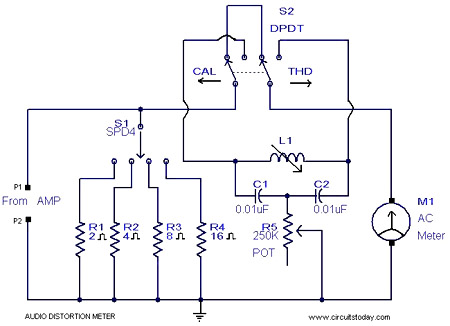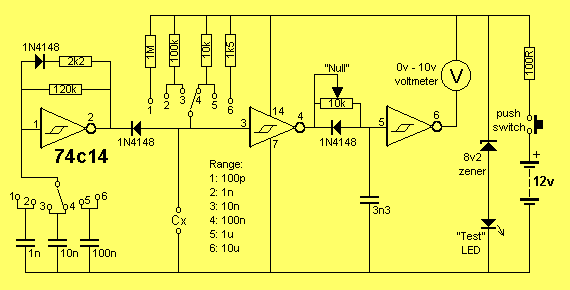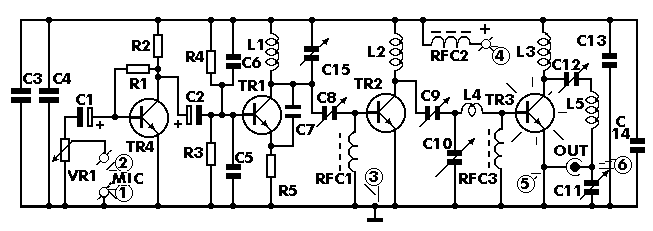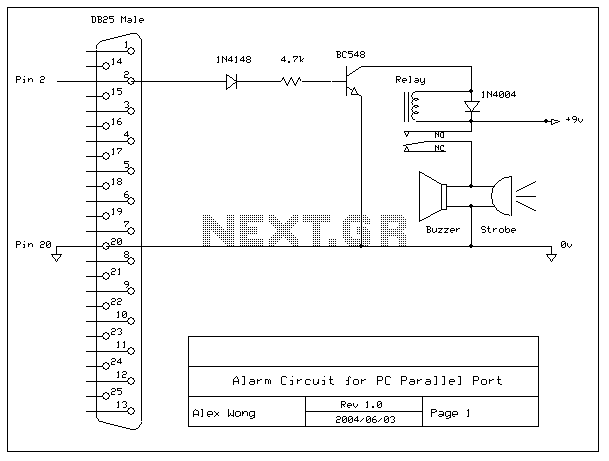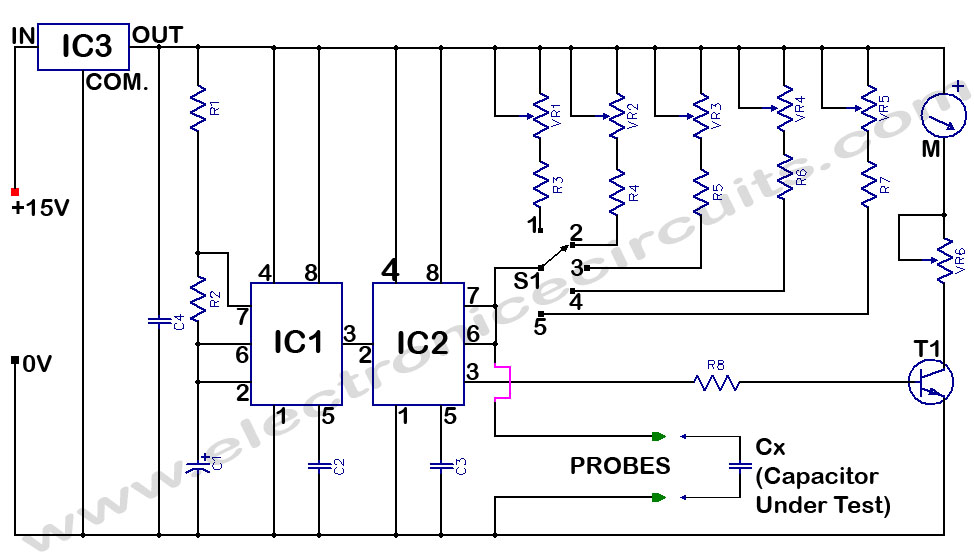
1 KW Watt Meter
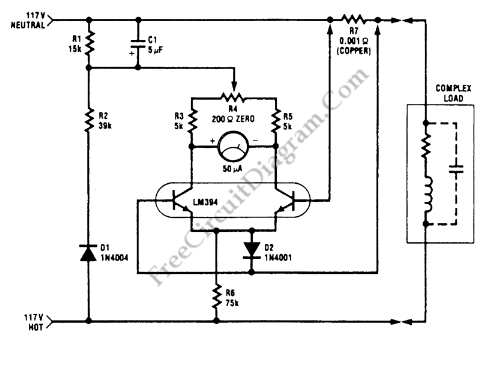
This watt-meter circuit has a measurement range of up to 1 kW. It can provide complete (X)(Y) functionality while utilizing only one transistor. The circuit is designed for operation with 117 Vac ± 50 Vac. Modifications can be made for lower voltage applications. This circuit measures power during negative cycles only. An advantage of this circuit is that it does not require an external power supply. It measures the true power delivered to the load. The schematic diagram of the circuit indicates that at idle, it draws only 0.5 W. The circuit has a load current-sensing voltage of 10 mV and a load voltage loss of 0.01%. For linear loads, the rejection of reactive load currents exceeds 100:1. When utilizing a 50 A meter movement, the nonlinearity of the circuit is approximately 1% of full scale. A copper shunt may be employed to provide accurate gain compensation due to temperature variations.
This watt-meter circuit is designed to accurately measure electrical power in AC circuits, specifically within a range of up to 1 kW. Utilizing a single transistor, the circuit is capable of performing both voltage and current measurements, thus enabling the determination of true power (measured in Watts) delivered to the load. The operational voltage range of 117 Vac ± 50 Vac makes it suitable for standard household and industrial applications, while the potential for modification allows adaptability for lower voltage scenarios.
The circuit's focus on measuring power during negative cycles is noteworthy, as it can enhance accuracy in certain applications where reactive power may not be a primary concern. One of the significant advantages is the absence of a need for an external power supply, making it efficient and easy to integrate into various systems.
The idle power consumption of only 0.5 W indicates a low-energy footprint, which is beneficial for energy-conscious designs. The load current sensing voltage of 10 mV ensures that even small variations in current can be detected, while the minimal load voltage loss of 0.01% indicates high efficiency in the measurement process.
The circuit exhibits excellent performance with linear loads, boasting a rejection ratio of reactive load currents greater than 100:1. This characteristic is crucial in applications where accurate power measurement is required in the presence of reactive components. The nonlinearity specification of approximately 1% at full scale when using a 50 A meter movement suggests that the circuit maintains a high degree of accuracy across its operational range.
For temperature compensation, the use of a copper shunt is recommended. This component helps to maintain the accuracy of the current measurement under varying thermal conditions, ensuring that the circuit remains reliable in diverse environments. Overall, this watt-meter circuit design represents an effective solution for measuring electrical power with a focus on accuracy, efficiency, and adaptability.This watt-meter circuit has measurement range up to 1-KW. This circuit can give the complete (X)(Y) function although uses only one transistor. Actually, this circuit is used for 117 Vac ±50 Vac operation. For lower or lower voltage, this circuit can be modified easily. This circuit only measure power on negative cycles. The advantages of this cir cuit is this circuit does not need external power supply. This circuit measures true power that is delivered to the load. Here is the schematic diagram of the circuit: At idle section, this circuit draw only 0. 5W. This circuit has load current-sensing voltage of 10mV and load voltage loss of 0. 01%. For linear loads, Rejection of reactive load currents is better than 100:1. When using a 50- A meter movement, the nonlinearity of this circuit is about 1% full scale. Copper shunt can be used to give correct gain due to temperature. [Circuit`s schematic diagram source: seekic. com] 🔗 External reference
This watt-meter circuit is designed to accurately measure electrical power in AC circuits, specifically within a range of up to 1 kW. Utilizing a single transistor, the circuit is capable of performing both voltage and current measurements, thus enabling the determination of true power (measured in Watts) delivered to the load. The operational voltage range of 117 Vac ± 50 Vac makes it suitable for standard household and industrial applications, while the potential for modification allows adaptability for lower voltage scenarios.
The circuit's focus on measuring power during negative cycles is noteworthy, as it can enhance accuracy in certain applications where reactive power may not be a primary concern. One of the significant advantages is the absence of a need for an external power supply, making it efficient and easy to integrate into various systems.
The idle power consumption of only 0.5 W indicates a low-energy footprint, which is beneficial for energy-conscious designs. The load current sensing voltage of 10 mV ensures that even small variations in current can be detected, while the minimal load voltage loss of 0.01% indicates high efficiency in the measurement process.
The circuit exhibits excellent performance with linear loads, boasting a rejection ratio of reactive load currents greater than 100:1. This characteristic is crucial in applications where accurate power measurement is required in the presence of reactive components. The nonlinearity specification of approximately 1% at full scale when using a 50 A meter movement suggests that the circuit maintains a high degree of accuracy across its operational range.
For temperature compensation, the use of a copper shunt is recommended. This component helps to maintain the accuracy of the current measurement under varying thermal conditions, ensuring that the circuit remains reliable in diverse environments. Overall, this watt-meter circuit design represents an effective solution for measuring electrical power with a focus on accuracy, efficiency, and adaptability.This watt-meter circuit has measurement range up to 1-KW. This circuit can give the complete (X)(Y) function although uses only one transistor. Actually, this circuit is used for 117 Vac ±50 Vac operation. For lower or lower voltage, this circuit can be modified easily. This circuit only measure power on negative cycles. The advantages of this cir cuit is this circuit does not need external power supply. This circuit measures true power that is delivered to the load. Here is the schematic diagram of the circuit: At idle section, this circuit draw only 0. 5W. This circuit has load current-sensing voltage of 10mV and load voltage loss of 0. 01%. For linear loads, Rejection of reactive load currents is better than 100:1. When using a 50- A meter movement, the nonlinearity of this circuit is about 1% full scale. Copper shunt can be used to give correct gain due to temperature. [Circuit`s schematic diagram source: seekic. com] 🔗 External reference
